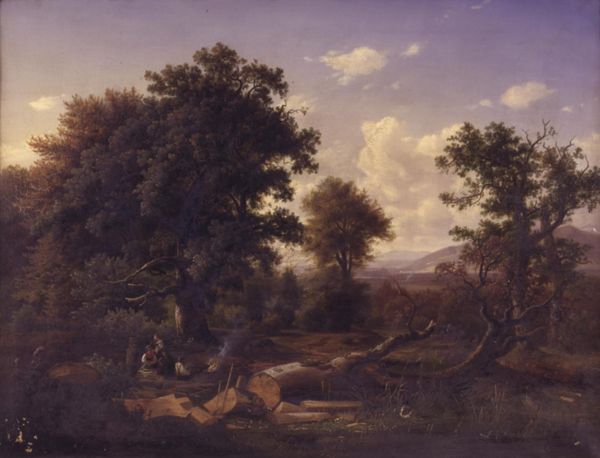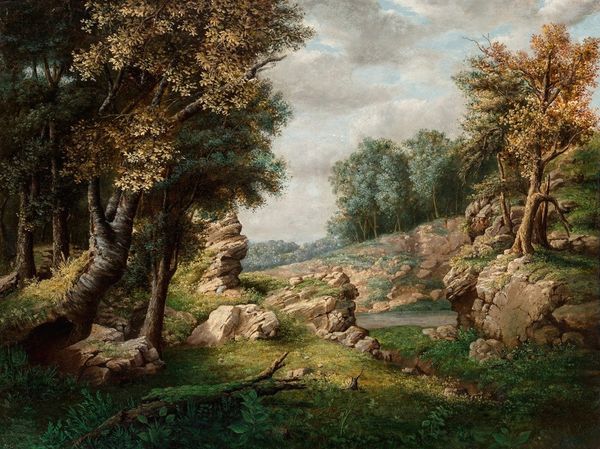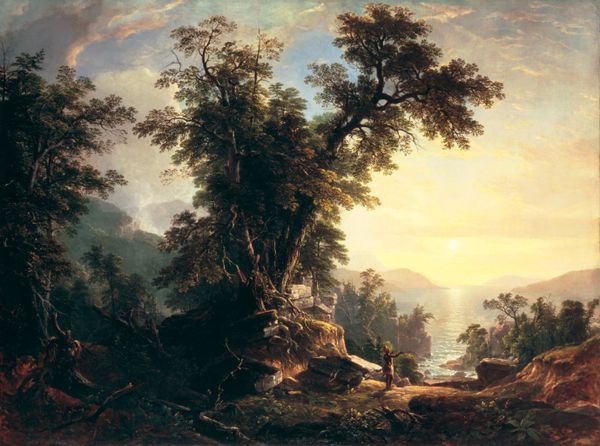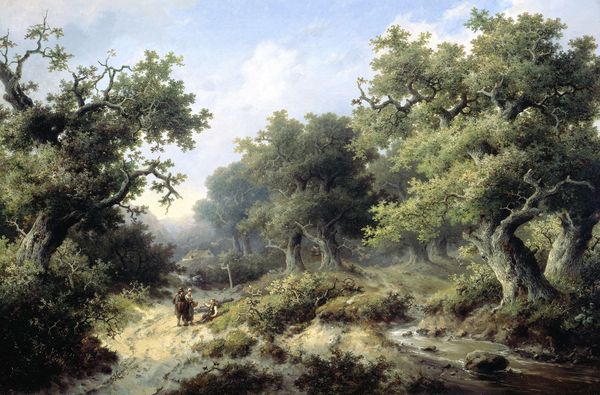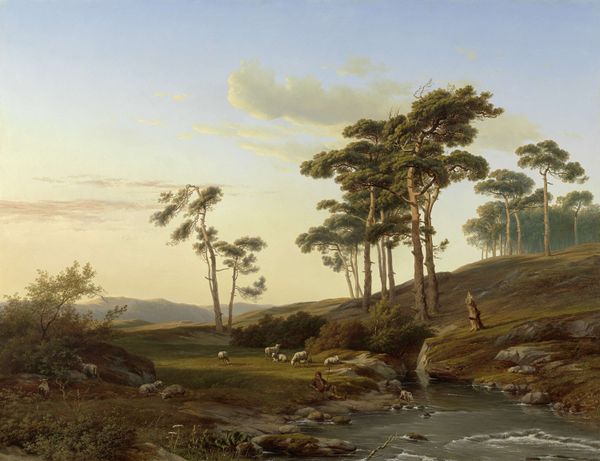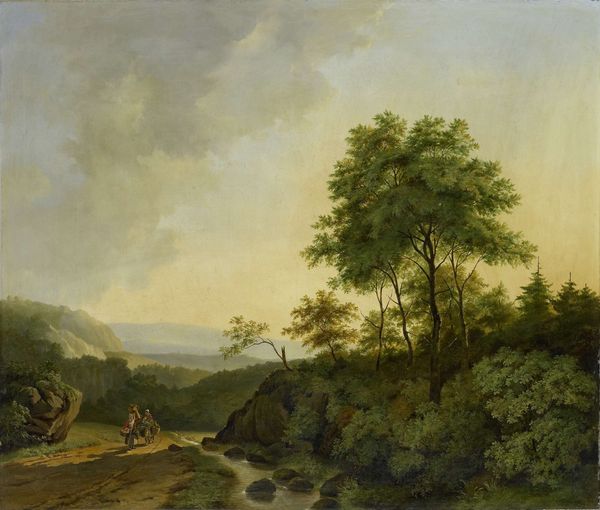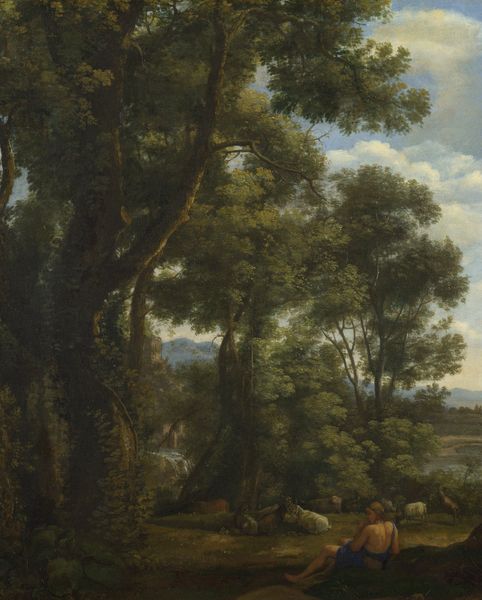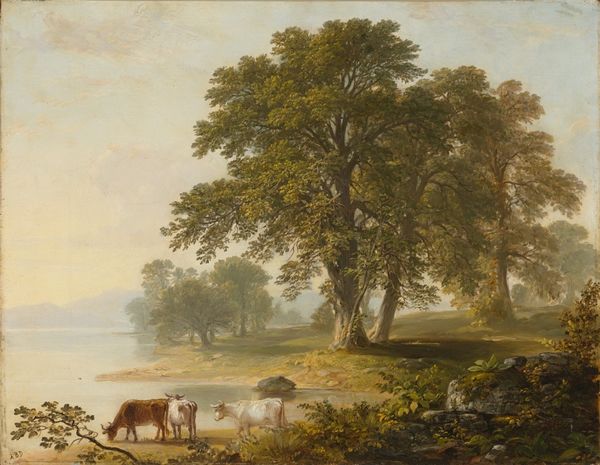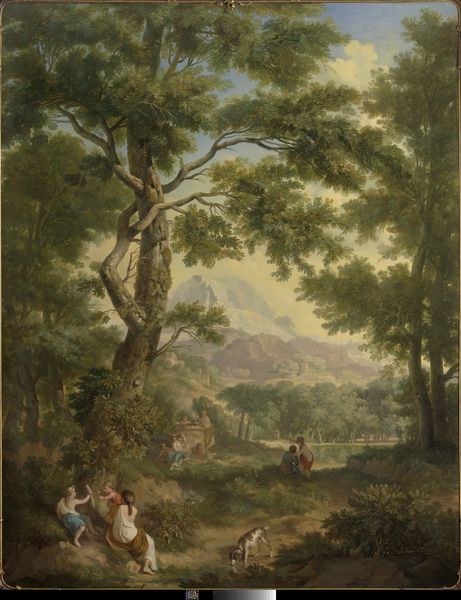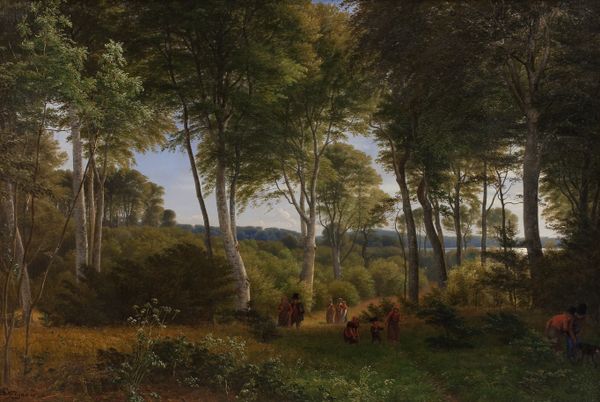
painting, plein-air, oil-paint
#
painting
#
plein-air
#
oil-paint
#
landscape
#
oil painting
#
romanticism
#
history-painting
Copyright: Public domain
Editor: We're looking at "Forest Pathway," an oil painting possibly by Hendrik Voogd. I am immediately drawn to its peacefulness, and how it portrays people in nature. What sociopolitical aspects do you see at play here? Curator: I see a pastoral scene seemingly detached from the turbulence of urban life. However, remember this painting was likely made during a time of social and economic upheaval, such as post-French Revolutionary Europe, or even during the Enlightenment. Doesn't the relationship between the figures, perhaps a land worker, and the setting hint at the hierarchies of labor, land ownership, and the romanticization of rural life so common in that period? What stories does this landscape conceal? Editor: That's a side to landscapes I had not fully considered. How does this reading challenge more traditional interpretations? Curator: Instead of simply appreciating the "beauty" of nature, we can examine how representations of nature served specific ideological purposes. The idealization of rural life often masked the harsh realities of peasant labor, class divisions, and the ongoing process of enclosure and dispossession. Can we read the lone figure as a representation of those often-unseen workers whose labor made leisure and landscape appreciation possible for the upper classes? How can we critically consider this power dynamic? Editor: Thinking about that makes the painting much more thought-provoking. I'll definitely look at landscape paintings with a different, more critical eye from now on. Curator: Exactly! Considering the context transforms the aesthetic appreciation into a dialogue about social dynamics and power structures embedded within seemingly idyllic scenes. We see not just beauty, but history and the implications of representation.
Comments
No comments
Be the first to comment and join the conversation on the ultimate creative platform.

